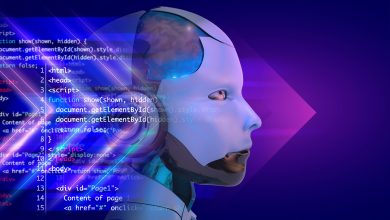When people think of AI, they tend to imagine more science fiction ideas like the Terminator, in which machines develop consciousness, realise that humanity is doomed and therefore weaker than machines and should be annihilated or subjugated. In reality, AI technology couldn’t be further from this fictional depiction, and its applications within the workforce are numerous and beneficial. However, people who work within this field do consider AI safety a priority. AI for all its benefits to our society does have the potential to hurt us too. AI safety ensures that AI is used for maximum benefit to humankind, with minimal harm.
What is AI Safety?
AI safety is widely defined as the undertaking to guarantee that AI is deployed in ways that do not harm humanity. AI has the capacity to benefit human lives, however, there are some unfortunate ways AI can be used to cause us great harm as well. AI safety includes not only all the space surrounding the technical aspects that can cause issues but the sharing of AI knowledge and information as well.
AI safety concerns: the technical side
Problems with safety can arise through the programming and technical use of AI. There are three main quadrants that require careful consideration, where AI problems can and do arise. They are autonomous learning with benign intent, human controlled with benign intent, and human controlled with malicious intent.
Autonomous learning with benign intent
Since these learning agents are autonomous, meaning they learn as they go, it is hard to know exactly how they will behave when first used. Problems such as what happens when interrupting such agents can affect their ability to learn to behave or not having a supervisor can affect which actions they choose to take, are mostly unsolved. Add to this fact that these agents can unsafely explore their environments, hack their reward functions, and cause negative side effects while attempting to do what they were built to do in the first place.
There are also numerous major policy questions associated with autonomous learning agents. These agents automate tasks traditionally achievable only by humans. Now, as a result, sophisticated autonomous learning agents could lead to massive unemployment and inequality issues that need to be addressed with care.
Human controlled with benign intent
Examples of human controlled AIs with benign intent include supervised algorithms, such as classifiers. These are trained, frozen into code and then deployed in order to make useful business decisions. Safety concerns arise for a number of reasons, including the following:
- Non-robust
AI algorithms can be non-robust, as far as performing well on their test data, but behaving very differently on other data, which can be a safety concern.
- Biased
Robust algorithms can reflect biases that exist in the training data or in feature selection. It’s a challenge to identify these biases and prevent them from happening in the future.
- Privacy violating
Sometimes, the deployment of an algorithm exposes sensitive information about the training set and can even be gleaned directly from the model without the release of training data.
- Lack of explainability
Sometimes, an algorithm, while not suffering from any of the previously mentioned problems, but not be easily interpretable. This issue presents a problem of its own because it makes it hard to conduct an external audit and prevents a clear reason as to why the AI is making the decision it’s making.
Human controlled with malicious intent
Not only do we have to consider the unintended consequences of deploying AI, but we must also consider the malicious use of AI that must be investigated and have counterstrategies developed in order to prevent harm.
AI, due to its ability to recognise faces in images and generate new images of that same face or new audio of a person’s voice, lends itself beautifully to mass surveillance, which could be misused by a state or organisation to control that population. Also, due to the same abilities that allow for mass surveillance, you can also create disinformation used for defamation or political means.
Solutions for these issues need to be both technical as well as policy-based and is a pressing matter. It’s just AI deployment that creates safety risks but sharing information about new AI research can also pose risks.
The potential risk of publishing the latest AI research
While people desire to keep AI knowledge accessible and free-flowing, there is also a concern of the new technology falling into the wrong hands and using it for nefarious purposes. The ethical practices of sharing AI technology need to be considered carefully before anything academic is shared publicly.
AI safety is paramount when making use of this technology. As we move forward, we must consider the greatest benefit with little harm.


